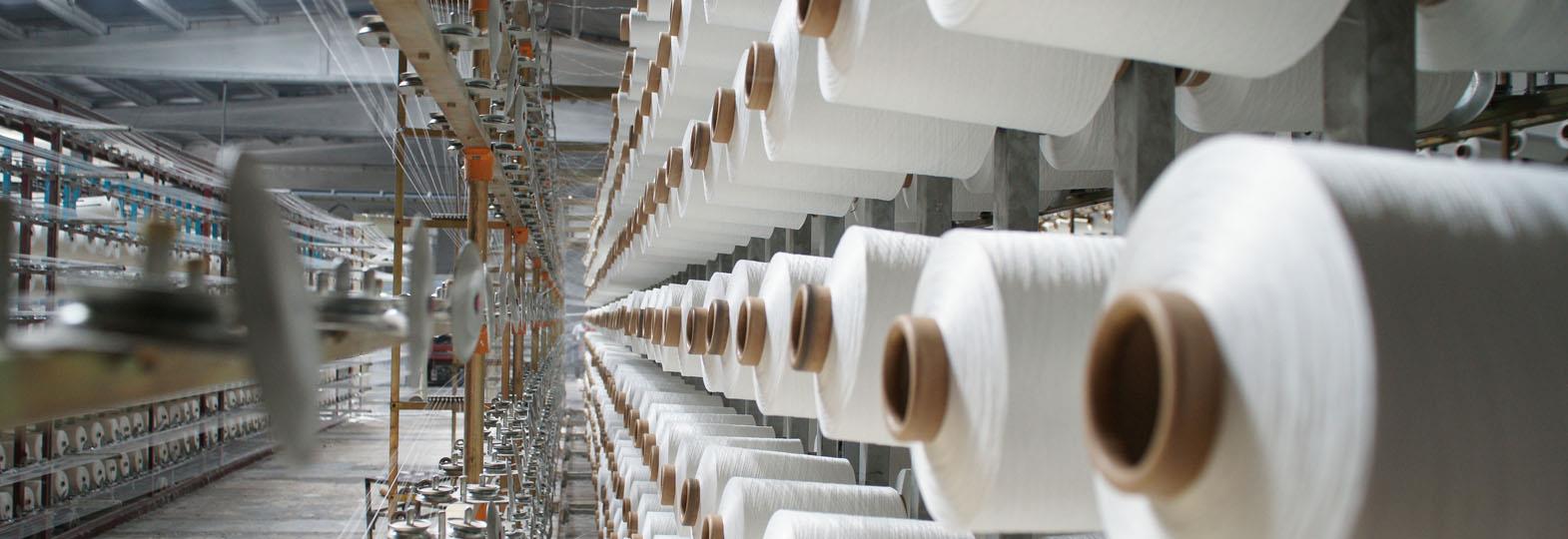Depending on where they come from, there are two distinct types of fibres: natural and synthetic. Natural fibres are derived from plants and animals with minimum processing, whereas synthetic fibres typically involve multiple stages, sophisticated gear, the use of numerous chemical compounds, and frequently non-renewable resources. Both varieties have benefits and drawbacks, and the textile industry values them all for different reasons.
The potential environmental effects resulting from textile manufacture, use, and disposal will rise along with the increase in global textile demand. Both natural and synthetic fabrics have a significant negative impact on our environment, and how this industry develops in the future will undoubtedly have an impact on us.
Natural fabrics use fibres originating from either plants or animals, while synthetic fabrics are created by humans from chemical compounds, typically plastic.
What are Synthetic Fibres?
A variety of materials are used to create synthetic apparel. Since the middle of the 20th century, synthetic fibres have grown in popularity and are now the most common. With the popularity of sportswear increasing, polyester, acrylic, nylon, and spandex will likely continue to rule the textile business. It is estimated that the market size of synthetic fibres will reach $177 billion by 2030. The growing need for materials for automobile interiors is an important element boosting the global market for synthetic fibres. Synthetic fibres are often used in car interiors because they are robust and versatile.
Polyester is renowned for withstanding repeated washings. Its inability to biodegrade and propensity to exude microplastics when washed, however, makes it a liability for the environment. However, the sustainability of polyester is increasing as more and more of it is produced from recycled bottles.
The very first synthetic fibre made was nylon, a polyamide fibre. It was initially promoted to ladies as a silk-stocking substitute. People were convinced that the man-made material might take the place of silk after seeing demonstrations of its strength and durability. These days, nylon is used for things other than pantyhose and tights. It is also regarded as a technological fibre that is utilised in industrial settings and for outerwear.
Currently, recycling nylon is a common practise for textiles. Since 2012, swimwear has been produced with recycled material.
Environmental Impacts of Synthetic Fibres
The impact of synthetic fibres on the environment is significant and takes various forms. The production of synthetic fabric poses environmental challenges in almost every stage of the process, from the extraction of raw materials to the wastewater from the dyeing process.
1. Extraction and Refining of Fossil Fuels
The combustion of fossil fuels and its impact on the environment have received much attention, but the extraction of these resources also puts biodiversity at risk. The disturbance of these ecosystems could result in the loss of natural resources such as food, medicine, and fibre.
However, the problems do not end there. Oil refineries contaminate the soil, air, and groundwater. Moreover, people who live close to oil refineries have higher rates of serious health issues caused by pollution.
2. Dyes
As it can be challenging to colour synthetic fibres, manufacturers use synthetic dyes to penetrate the fibres. Synthetic dyes have the advantage of being highly resistant to light and heat, and they can even withstand environmental degradation. However, this is also why they are harmful to the environment.
Synthetic dyes have been found in water and underwater sediment, in addition to fish. Given their widespread use, it is not surprising that they have entered both soil and aquatic habitats. Researchers are concerned about the toxicity and pharmacological properties of these compounds.
3.Microplastics
Microplastics have received significant media attention recently because of their negative impact on the environment and widespread presence. Clothing and tyres are the primary contributors to this phenomenon. In fact, over 35 per cent of microplastics1 that enter the water come from synthetic clothing. This is primarily due to the laundry process, and the fibres frequently find their way up the food chain by accidentally being consumed by marine organisms.
Polyester, polyamide, and acetate—which is considered a semi-synthetic fibre—three of the most widely used synthetic fabrics, all shed microfibres. Over 700,000 fibres2 are estimated to be discharged during a typical wash load.
Alternatives to Using Synthetic Fabric
Synthetic fabrics have gained popularity due to their accessibility, flexibility, and low cost. However, there are alternative materials available that are more sustainable and environmentally friendly.
Buy Secondhand Clothing: Buying used synthetic clothing prevents the creation of new fibres and reduces the need for non-renewable resources like fossil fuels. This also helps to reduce the release of microplastics, as newer clothing composed of synthetic fibres release less microplastic than older clothes. To further minimise microplastic release, it is recommended to use a microfibre laundry bag or a filter for your washing machine.
Invest in Recycled Textiles: Recycled textiles are made from existing materials, such as discarded clothing and fabric scraps. This process reduces waste and prevents synthetic materials from ending up in landfills. While recycled textiles go through a chemical process, it is still a more sustainable option as there is no constant use of non-renewable resources.
Make Use of Semi-synthetic Fabrics: Semi-synthetic textiles are created from naturally occurring polymers, such as cellulose. These fabrics, which include viscose, lyocell, and modal, are made from regenerated cellulose and are more environmentally friendly than fully synthetic materials. Clothing made from bamboo or cotton linter (cupro) are also considered semi-synthetic fabrics.
Choose Natural Fibres: Natural fibres such as cotton, wool, silk, and linen are renewable resources and biodegradable. While they may be more expensive than synthetic materials, they are more sustainable and have less impact on the environment. Be aware of fibre finishes, however, as some of them may be synthetic and cause the same issues as fully synthetic fibres.
While a complete ban on synthetic fibres may not be feasible, incorporating more sustainable materials into our daily lives can help reduce their negative impact on the environment.
What are Natural Fibres?
Natural fibres are textiles that are made using raw materials sourced from minerals, plants, or animals. These fibres are then woven or knitted into threads and yarn. Natural fibres can be classified into two categories: plant-based or animal-based. Examples of natural fibres derived from animals include silk and wool, while cotton, linen, and jute are examples of plant-based fibres.
Natural fibres are generally considered to be eco-friendly and have a low impact on the environment throughout their manufacturing, use, and disposal. This is because many types of natural fibres, such as cotton, linen, hemp, and wool, have the potential to produce fewer emissions than synthetic materials like polyester and acrylic fibres.
The popularity of natural fibres has been increasing as people switch away from synthetic and harmful materials. Several surface modifications and chemical treatment techniques can be employed to address some of the drawbacks of natural fibres, such as biocompatibility and hydrophilic characteristics, in order to improve their suitability for different applications. Natural fibres have been successfully used in a wide range of applications, including textiles, biomedical materials, biopolymers, biosensors, composite materials for building and engineering, and smart packaging.
The global eco fibre market is estimated to grow by 7.6 per cent during the current year, 2023. The increasing popularity of organic cotton is expected to drive the market growth. Manufacturers are increasingly choosing organic cotton because its cultivation does not contaminate air, land, or surface water. The demand for organic eco fibres has also been influenced by growing concern about the negative environmental effects of synthetic fibres.
Other Fibres
There are several alternatives to traditional fibres that are gaining popularity due to their eco-friendliness and sustainability. Here are a few examples:
Bamboo Fibre – Bamboo fibre is made from the pulp of bamboo plants and is known for its strength and softness. It is also a very renewable resource that requires little water for growth. Bamboo fabric has excellent moisture wicking properties, making it ideal for activewear clothing items such as t-shirts, shorts, and base layers.
Hemp Fibre – Hemp fibre is produced using hemp plants that require minimal pesticides or herbicides during cultivation. Hemp fabric has a breathable texture yet offers good water retention properties, making it an excellent choice for many clothing items such as hats, shirts, pants, and jackets. The fabric also has anti-bacterial properties, which make it odour resistant and an attractive option for outdoor activities or extended use clothing items like yoga wear or swimwear.
Soy Fibre – Soy fibre is derived from natural soybeans, making it both eco-friendly and renewable while still providing superior strength when compared to other fabrics such as cotton or linen. The material is resistant to wrinkles yet retains a breathable texture with good moisture wicking capabilities, ideal for summer wear including tops, skirts, and dresses.
Environmental Benefits of Natural Fibres
Natural fibres have many environmental benefits compared to synthetic fibres. Here are six ways in which natural fibres can reduce the negative impact on the environment:
Low Impact Growing: Natural fibres are grown without the use of harmful pesticides or chemicals, making them much more eco-friendly than synthetic fibres. This also reduces the risk of chemical runoff into surrounding soil and water sources.
Biodegradable: Natural fibres like cotton, wool and jute are biodegradable, meaning they can break down naturally over time in appropriate conditions. This is in contrast to synthetic fibres, which do not easily decompose and contribute to pollution and waste.
Lower Carbon Footprint: Natural fibre crops like cotton require less energy for harvesting and cultivation compared to petroleum-based synthetic fabrics. As a result, they have a lower carbon footprint and can help reduce greenhouse gas emissions.
Reduced Water Pollution: The manufacturing process for most natural fibres is water-based, which releases fewer pollutants into surrounding water sources than synthetic fabrics. Additionally, natural fibres often require less water for cleansing once transformed into finished products, reducing the overall water usage.
Durability & Longevity: Natural fabrics, with proper care, can often outlast synthetic fabrics, reducing the need for future manufacturing efforts and waste production. This also means less money spent on replacement clothing over time.
Safe Working Conditions: Many traditional cultures rely heavily on growing and harvesting natural fibres like cotton. Labour practices in these industries often prioritise quality of life considerations better than in global textile sweatshops that produce synthetics cheaply but at a significant ethical cost.
Thus, natural fibres offer many benefits for the environment, including reducing water pollution, lowering carbon footprint, and providing safe working conditions for those involved in the manufacturing process. By choosing natural fibres, we can reduce our impact on the environment and contribute to a more sustainable future.
Ending Note
While there are arguments in favour of synthetic fibre being more sustainable in some ways, such as using less land area to produce the same amount of fabric, it is important to consider the impact on people’s health and well-being. Synthetic fabrics often contain chemicals that can be harmful to wearers and those involved in their production. On the other hand, natural fibres are generally grown without the use of pesticides or chemicals, making them more eco-friendly. However, both types of fabric have advantages and disadvantages, and it is important to consider where and how they are sourced. Ultimately, sustainability depends on a range of factors, and each individual must weigh their options carefully.











Comments